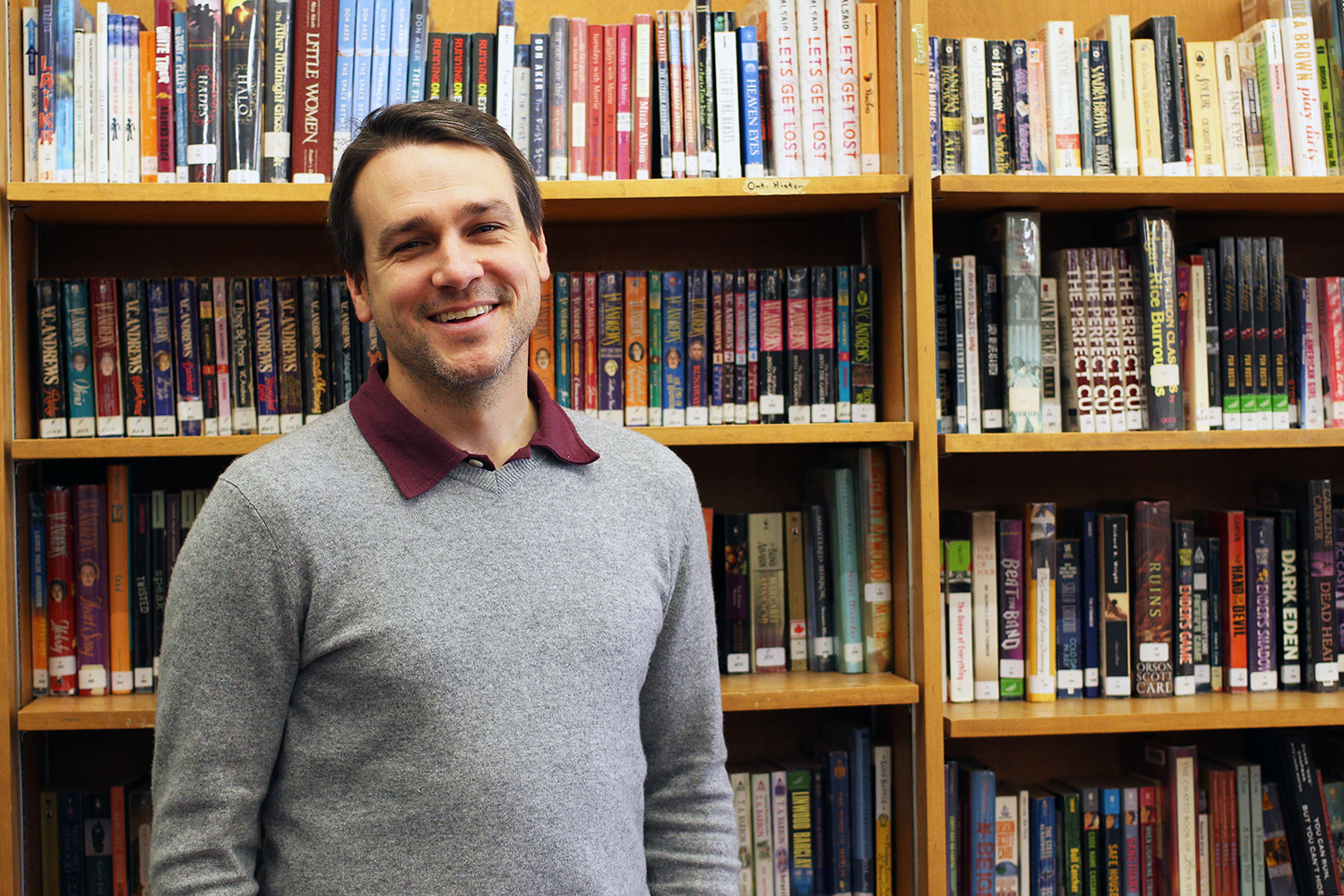Old with the old, in with the new

Kevin Williams at Belle River District High School on Oct. 25, 2017.( Photo by: Julianna Bonnett)
Learning in a library?
It is a digital world and according to an Association of Teachers and Lecturers survey, teachers are concerned about the future of school libraries. The study showed that 22 per cent of teachers said their libraries had suffered at least a 40 per cent cut in funding since 2010 and 21 per cent said their budget is insufficient for encouraging children to read. The majority of school libraries in Ontario have been transformed into a learning common area.
Kevin Williams, school librarian at Belle River District High School, said he is fortunate to still have funding for books in his library.
“We have many students who love to read. In fact, our Book Club continues to grow year to year, which justifies the need for a proper working budget for all school and community libraries,” said Williams.
He describes the area as a different space than what he remembered from his school library experience.
“We have many students who frequently use the library during their lunchtime to eat and socialize with their friends, while others are looking for a quiet place to complete their homework or to just relax in one of the Adirondack chairs,” said Williams.
According to the Canadian Library Association, learning commons focus on the creativity of the students. They are positioned to provide learning experiences which include critical thinking and taking students creativity to the next level but students are not happy with the changes.
“I went to St John the Baptist in elementary school is when I first saw them transforming our library to a learning common. They completely got rid of all books and it was just electronic devices,” said Bailey Lebert, a student at Belle River District High School.
Lebert said having a school library gives you access to multiple learning tools.
“Belle River has half books and half electronics. I think having a library in a school is essential to our learning. You cannot find everything on the Internet. There’s things that I read in books that I cannot find online,” said Lebert.
Learning commons have now been added in both elementary and high schools across Ontario.
Mike Thrasher, at the Greater Essex County District School Board, said the idea of a learning commons is a place where you can be comfortable.
“We were worried when they first talked about making the libraries learning commons. Since the cut in funding we thought most school libraries would be shut down. I’m surprised by how much I like it. It’s a nice place to communicate and learn with your peers,” said Thrasher.
Thrasher said learning commons are a nice place to work and can offer students a lot of support.
“The Catholic school boards don’t have libraries. Their libraries have been fully turned into computer labs. With the GECDSB, it is both books and electronics. Learning commons have opened up more doors for kids to communicate with one another,” said Thrasher.
According to Williams, “Despite the digital age, the fundamentals of reading will not be forgotten. Reading will always most certainly be an essential skill that we need to encourage and foster within our children.”


